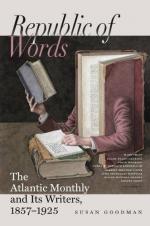The Hemp-birds are remarkable for associating at a certain season, and singing, as it were, in choirs. “During spring and summer,” says Mr. Fowler, “they rove about in small flocks, and in July will assemble together in considerable numbers on a particular tree, seemingly for no other purpose than to sing. These concerts are held by them on the forenoon of each day, for a week or ten days, after which they soon commence building their nests. I am inclined to believe that this is their time of courtship, and that they have a purpose in these meetings beside that of singing. If perchance one is heard in the air, the males utter their call-note with great emphasis, particularly if the new-comer be a female; and while in her undulating flight she describes a circle, preparatory to alighting, they will stand almost erect, move their heads to the right and left, and burst simultaneously into song.”
While engaged in these concerts, it would seem as if they were governed by some rule, that enabled them to time their voices, and to swell or diminish the volume of sound. Some of this effect is undoubtedly produced by the gradual manner in which the different voices join in harmony, beginning with one or two, and increasing in numbers in a sort of geometrical progression, until all are singing at once, and then in the same gradual manner becoming silent. This produces the effect of a perfect crescendo and diminuendo. Beginning, as it seems, at a distance, one voice leads on another, and the numbers multiply until they make a loud shout, which dies away gradually until one single voice winds up the chorus. These concerts are repeated at intervals, sometimes for an hour in duration.
Another peculiar habit of the Hemp-bird is that of building a nest, and then tearing it to pieces before any eggs have been deposited in it, and using the materials to make a new nest in another locality. In former years I have repeatedly watched this singular operation, in the Lombardy poplars that stood before my study-windows. I have thought that the male bird only was addicted to this practice, and that this might be his method of amusement while unprovided with a partner. The nest of the Hemp-bird is made of cotton, the down of the fern, and other soft materials, woven together with threads and the fibres of bark, and lined with thistle-down, if it be late enough to obtain it, and sometimes with cow’s hair. It is commonly placed in the fork of the slender branches of a maple, linden, or poplar, and is fastened to them with singular ingenuity.
Among the earliest songsters of spring, occasionally tuning his voice before the arrival of the multitudinous choir, is the Crimson Finch or American Linnet (Fringilla purpurea). I have frequently heard his notes on warm days in March, and once, in a very mild season, I heard one warbling cheerily on the 18th of February. But the Linnet does not persevere like the Song-Sparrow, after he has once commenced. His voice is only occasionally heard, until the middle of April, after which he is a very constant singer.




